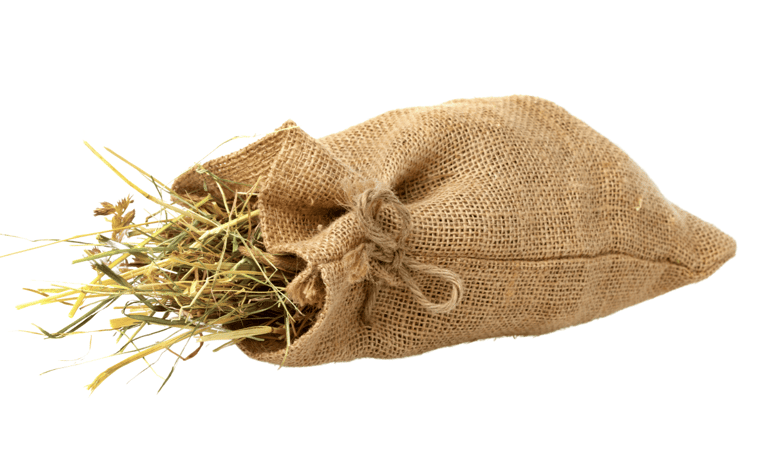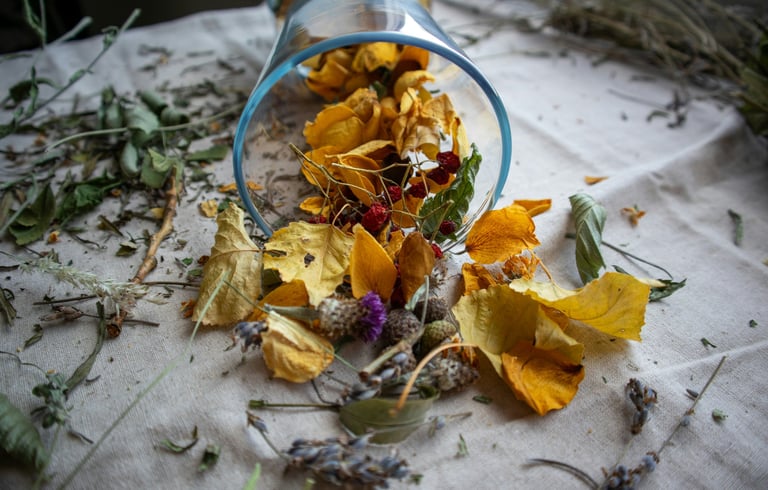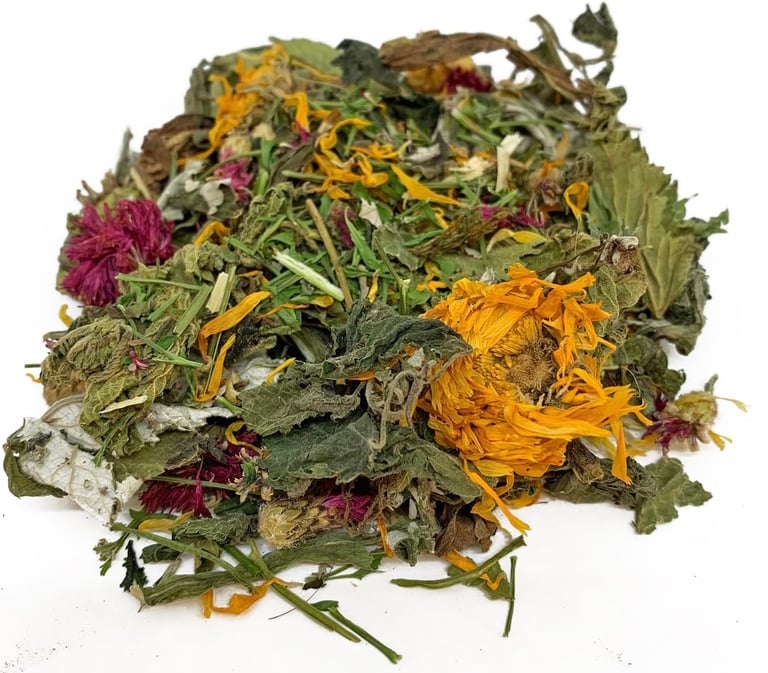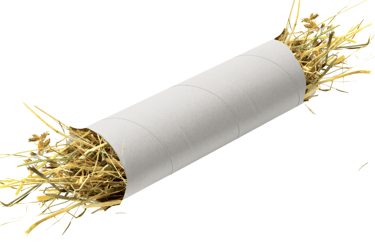how to get your pet to eat more hay
Hay/grass should be the primary source of food for a healthy rabbit so if you have a 'fussy' rabbit, guinea pig or chinchilla.
Follow these tips to encourage them to eat more.
And no matter how cute their little faces are, please don't be tempted to feed them more veg, pellets or treats and this can lead to a whole host of health complications such as GI Stasis, obesity & more!
why won't my rabbit eat hay?
This is one of the most common issues we hear with small animals like rabbits, guinea pigs & chinchillas, that rely on high fibre hay intake to be able to function!
In particular, more & more rabbit owners face this battle everyday.
Lets take a look at the the reasons why your rabbit won't eat the hay you've lovingly purchased - having spent your precious time perusing the shelves, deciphering the different types of hay, gasping at the cost of a bag of hay but thinking, 'awe, it will be worth the price to see them eat it all up & enjoy it'.
Off you scuttle home, anticipation of a cute smoochy face excited to see you with their new hay,
you pop it into their hay rack.......
they take a sniff....
a tiny nibble......
and stomp off throwing a bunny tantrum in the opposite direction declaring their zero intention of ever entering the vicinity of the hay rack ever again because shame on you human for failing to provide me with proper sustenance.........
Yes, and I think a lot of bunny owners can verify, these little tiny furballs have more sass and attitude than a reality TV star at the show reunion, when they are not happy with their food!
So let's figure out the cause to help us find a solution:
Are they in pain or discomfort?
Rabbits hide pain incredibly well as they are prey animals and are pre-programmed to not show weakness to avoid being 'picked off' by a predator. One of the first signs of illness is loss of interest in eating and you need to act quickly to minimise the impact on their tiny digestive system as it can shut down quickly unless they regularly eat high fibre hay or grass.
Could their teeth have overgrown and cause discomfort and inability to break down food?
Is the hay poor quality? Dusty, damp, mouldy etc?
Do they not like the taste & consistency of the hay?
Are they having difficulties with the other rabbits they share with?
We got ya!


Here's some ideas:
TOP TIPS TO GET YOUR RABBIT TO EAT MORE HAY
1. Add dried leaves, herbs & flowers - commonly referred to as 'foraging' or 'rabbit foraging'


Understanding Rabbit Foraging
Foraging is a natural behaviour for rabbits, involving the search for food such as grass, leaves, and even tree bark. This activity varies with the seasons and the availability of different plants. While wild rabbits roam freely to satisfy their dietary needs, domesticated rabbits often miss out on this natural behaviour, especially if their environment is restrictive and their diet is limited to pellets or nuggets.
Why Encourage Foraging?
Foraging is crucial for rabbits as it mimics their natural eating habits, where they would spend considerable time each day searching for a variety of foods. This not only keeps them engaged and reduces boredom but also promotes slower eating habits, which are essential for proper digestion and preventing obesity. By encouraging your rabbit to forage, you're helping them to stay active, healthy, and mentally stimulated.
Enhancing your rabbit's environment to promote foraging behaviour is an effective way to encourage them to eat more hay. Here are some practical tips to integrate foraging into your rabbit's daily routine:
Mix in Dried Foraging: Sprinkle a mix of dried edible flowers, herbs, and leaves into their hay. This not only enriches the flavour and variety of their hay but also piques their curiosity and encourages them to dig through their hay to find these healthy, tasty treats.


We've handpicked a range of safe, nutritious, and rabbit-friendly dried flowers, herbs, and greens that are perfect for mixing into your rabbit's hay. These additions not only promote healthy eating habits but also keep your rabbit engaged and entertained.
Explore our Amazon store to find:
Dried Flowers: Add a burst of color and taste with chamomile, marigold, and lavender.
Herbal Blends: Aromatic and beneficial, herbs like mint, dill, and parsley can stimulate your rabbit's appetite and interest.
Edible Leaves: From dandelion to raspberry leaves, these provide a natural and tasty chew for your bunny.
By incorporating these foraging materials into your rabbit's daily diet, you not only enrich their environment but also support their overall well-being.
Visit our Amazon Store Now to find the perfect foraging treats for your furry friend!
2. Create a Hay-Scatter Playground: Instead of placing hay solely in a feeder, scatter it around your rabbit’s living area or hide it in cardboard boxes, paper bags, or tubes. This setup encourages your rabbit to move around and explore as they eat, mimicking the foraging they would do in the wild.
Use Varied Containers: Instead of just using a standard hay rack, get creative with where you place the hay. Use cardboard boxes, paper bags, and tubes to hide the hay. Cut holes in these containers to allow your rabbit to pull the hay out, similar to how they might tug at grass and leaves in nature. You can also create hanging hay dispensers from safe materials to add variety to how your rabbit accesses their food.
Spread the Hay: Scatter hay in small piles around the designated areas. This encourages your rabbit to hop from one spot to another, searching for these mini hay caches. It simulates the patchy availability of food sources in the wild, which keeps foraging instincts sharp.
Encourage Exploration: Hide some favorite treats or pieces of dried foraging mix within the hay to make the search more rewarding. As your rabbit digs through the hay to find these treats, they'll inadvertently consume more hay, which is excellent for their digestive health.
Rotate the Setup: Regularly change the locations of the hay and the types of containers you use. This prevents your rabbit from getting bored and maintains a high level of interest in exploring their environment.
Monitor and Adjust: Keep an eye on how your rabbit interacts with the setup. Some rabbits may prefer certain types of containers or locations. Tailor the environment to your rabbit's preferences to maximize engagement.
This "Hay-Scatter Playground" not only helps increase the amount of hay your rabbit eats but also enriches their daily life, reducing boredom and increasing physical activity. It's a simple, effective way to care for your rabbit's well-being while providing them with a stimulating and enjoyable eating experience.


Choose the Right Spaces: Identify safe areas within your rabbit’s living environment where you can scatter hay. These could be inside their enclosure or in a rabbit-proofed room where they have supervised access.


